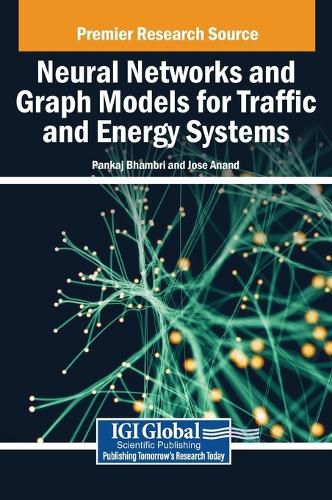Readings Newsletter
Become a Readings Member to make your shopping experience even easier.
Sign in or sign up for free!
You’re not far away from qualifying for FREE standard shipping within Australia
You’ve qualified for FREE standard shipping within Australia
The cart is loading…






This title is printed to order. This book may have been self-published. If so, we cannot guarantee the quality of the content. In the main most books will have gone through the editing process however some may not. We therefore suggest that you be aware of this before ordering this book. If in doubt check either the author or publisher’s details as we are unable to accept any returns unless they are faulty. Please contact us if you have any questions.
Neural networks and graph models play a transformative role in optimizing traffic and energy systems, offering advanced solutions for managing complex, interconnected infrastructures. Neural networks can predict traffic patterns, optimize routes, and improve the efficiency of energy distribution networks by learning from real-time data. Graph models help represent and analyze the relationships and flows within transportation and energy systems, enabling more accurate modeling of networks and their interactions. Together, these technologies allow for smarter traffic management, reduced congestion, and enhanced energy grid efficiency. As cities and industries continue to grow, integrating neural networks and graph models into traffic and energy systems is essential in creating sustainable, efficient, and resilient urban environments. Neural Networks and Graph Models for Traffic and Energy Systems explores the sophisticated techniques and practical uses of artificial intelligence in improving and overseeing traffic and energy networks. It examines the connection between neural networks and graph theory, showing how these technologies might transform the effectiveness, sustainability, and robustness of urban infrastructure. This book covers topics such as sustainable development, energy science, traffic systems, and is a useful resource for energy scientists, computer engineers, urban developers, academicians, and researchers.
$9.00 standard shipping within Australia
FREE standard shipping within Australia for orders over $100.00
Express & International shipping calculated at checkout
This title is printed to order. This book may have been self-published. If so, we cannot guarantee the quality of the content. In the main most books will have gone through the editing process however some may not. We therefore suggest that you be aware of this before ordering this book. If in doubt check either the author or publisher’s details as we are unable to accept any returns unless they are faulty. Please contact us if you have any questions.
Neural networks and graph models play a transformative role in optimizing traffic and energy systems, offering advanced solutions for managing complex, interconnected infrastructures. Neural networks can predict traffic patterns, optimize routes, and improve the efficiency of energy distribution networks by learning from real-time data. Graph models help represent and analyze the relationships and flows within transportation and energy systems, enabling more accurate modeling of networks and their interactions. Together, these technologies allow for smarter traffic management, reduced congestion, and enhanced energy grid efficiency. As cities and industries continue to grow, integrating neural networks and graph models into traffic and energy systems is essential in creating sustainable, efficient, and resilient urban environments. Neural Networks and Graph Models for Traffic and Energy Systems explores the sophisticated techniques and practical uses of artificial intelligence in improving and overseeing traffic and energy networks. It examines the connection between neural networks and graph theory, showing how these technologies might transform the effectiveness, sustainability, and robustness of urban infrastructure. This book covers topics such as sustainable development, energy science, traffic systems, and is a useful resource for energy scientists, computer engineers, urban developers, academicians, and researchers.